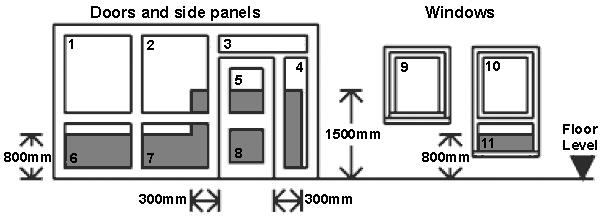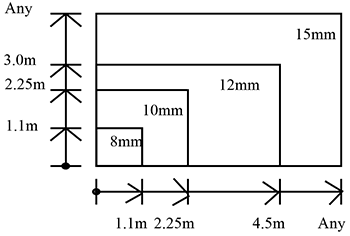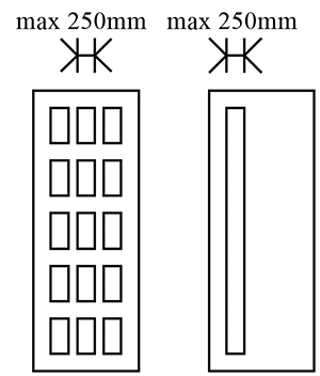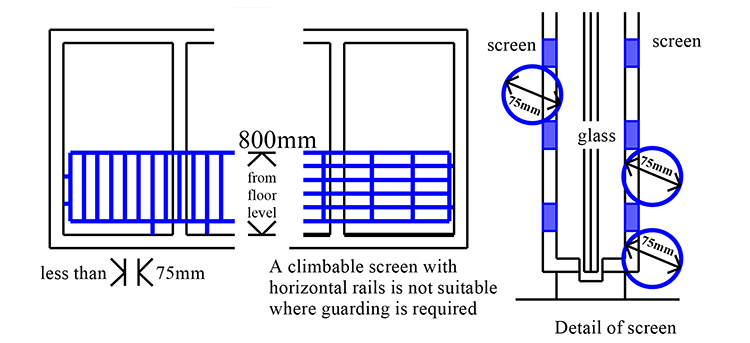Safety glazing
Glazing - materials and protection building regulation 4(1),(2), schedule 1: part N
The most likely locations for impacts leading to cutting and piecing injuries are in doors and door side-panels and at low level in walls and partitions.
The following locations may be considered "critical" in terms of safety:
- Glazing in doors: which is wholly or partially within 1500mm from floor level
- Glazing adjacent to doors which is wholly or partially within 300mm of the edge of a door and which is also wholly or partially within 1500mm from floor level
- Low level glazing not covered by (1) or (2). Glazing which is wholly or partially within 800mm from floor level.
Diagram 1 critical locations in internal and external walls

Shaded areas show critical locations to which requirements N1 applies. That is glazing in areas numbered 2, 4, 5, 6, 7, 8 and 11.
Reducing the risks
Glazing in critical locations should either:
- Break safely if it breaks
- Be robust or in small panel
- Be permanently protected
- Safe breakage, which in practice is concerned with the performance of laminated and toughened glass, is defined in BS6206:1981. In terms of safe breakage a glazing material suitable for installation in a critical location would need to satisfy the test requirements of class C of BS6206 or, if it installed in a door or in a door side panel and has a pane width exceeding 900mm, the test requirements of Class B of BS6206.
- Robustness - annealed glass which is ordinary glass as it is manufactured with no further processes being applied to it. This includes float glass, rolled glass, wired glass. It strength is gained through thickness.
Diagram 2 indicates reasonable glass thickness/dimension limits for annealed glass which may be used in critical locations.
Diagram 3 gives maximum allowable pane sizes and areas of small panes of nominal 6mm annealed glass, except in traditional leaded or copper lights in which case 4mm would be acceptable when fire resistance is not a factor.
Diagram 2 annealed glass thickness/dimension limits

Diagram 3 dimensions and areas of permanent screen protection

Maximum area of single pane not exceed 0.5m small panes of annealed glass should not be less than 6mm in thickness.
If, as part of a design solution, glazing in a critical location is installed behind permanent screen protection,the screen should:
- Prevent a sphere 75mm from coming into contact with the glazing,
- Be robust
- If it is intended to protect glazing that forms part of a protection from falling, be difficult to climb. That is vertical rails not horizontal.
Diagram 4 permanent screen protection

All safety glazing should be suitably marked in accordance with BS 6206. The markings should still be visible after the glass has been fitted and the beading or pointing has been carried out.
Double Glazing - Where a double glazing unit can only be impacted from one side, then only the pane on that side needs to comply with N1.